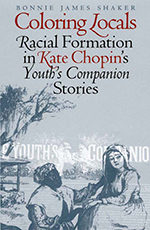Entitled to the Pedestal
“Nghana Lewis’s redirected spotlight on White Southern Womanhood’s productive uses for modernity shines beyond the literary, inspiring us to scrutinize how Plantation Mythology and the Southern Lady’s card shape the work of not only female authors 1920–1945 but also contemporary figures ranging from Queen Latifah and Oprah Winfrey to Elizabeth Dole, Kay Bailey Hutchison and even Laura Bush.”—Bonnie James Shaker, author, Coloring Locals
“This scathingly honest critique provides brilliant readings that take into account every nuance and every change in the position of white women in relation to supposed white male hegemony and to African American agency. . . . Bringing attention to texts that are rarely taught, Lewis reveals thematic issues and formal subtleties that contribute a very different literary canon from that found in most college syllabi.”—Rebecca Mark, director, H. Sophie Newcomb Memorial College Institute, Tulane University
In this searching study, Nghana Lewis offers a close reading of the works and private correspondences, essays, and lectures of five southern white women writers: Julia Peterkin, Gwen Bristow, Caroline Gordon, Willa Cather, and Lillian Smith. At the core of this work is a sophisticated reexamination of the myth of southern white womanhood.
Lewis overturns the conventional argument that white women were passive and pedestal-bound. Instead, she argues that these figures were complicit in the day-to-day dynamics of power and authorship and stood to gain much from these arrangements at the expense of others.
At the same time that her examination of southern mythology explodes received wisdom, it is also a journey of self-discovery. As Lewis writes in her preface, “As a proud daughter of the South, I have always been acutely aware of the region’s rich cultural heritage, folks, and foodstuffs. How could I not be? I was born and reared in Lafayette, Louisiana, where an infant’s first words are not ‘da-da’ and ‘ma-ma’ but ‘crawfish boil’ and ‘fais-do-do.’ . . . I have also always been keenly familiar with its volatile history.” Where these conflicting images—and specifically the role of white southern women as catalysts, vindicators, abettors, and antagonists—meet forms the crux of this study. As such, this study of the South by a daughter of the South offers a distinctive perspective that illuminates the texts in novel and provocative ways.




